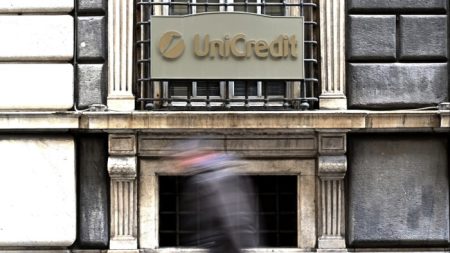Controversy over initial public offerings is raging once again, after design software firm Figma went public and saw its stock surge 250 per cent — reaching a $60bn market cap.
Critics — including venture capitalist Bill Gurley — accused banks of deliberately underpricing shares to hand easy profits to favoured institutional clients. To many observers, the process looks rigged.
With $FIG we have another massive “POP” highlighting the gross inefficiency in the modern IPO process. It’s very simple. They REFUSE to match supply/demand (that happened today). They brag about the mis-match – “30X oversubscribed.” The outcome is expected & fully intentional.
— Bill Gurley (@bgurley) July 31, 2025
The outrage is understandable. If a company prices its IPO at $33 and the stock opens at $115.50, the most charitable interpretation might be professional malpractice or gross incompetence, with $3bn left on the table.
But the righteous anger overlooks the incentives, sophistication of the players involved, and lack of a better alternative.
The first question is who, exactly, was wronged? Cui malo? Venture capital firms Index Ventures, Greylock Partners, Kleiner Perkins, and Sequoia Capital sold about 11mn shares in the IPO, meaning they each gave up hundreds of millions in potential gains. But these VCs have much experience in the equity capital markets and hold the whip hand over the investment bankers.
Had they felt short-changed, they could have demanded a higher price. Their acceptance of the IPO valuation implies a deliberate choice driven by broader strategic considerations. Besides, the VC firms are sitting on gains ranging from 27 times to 1,900 times, which makes it easier to be magnanimous about price.
(The Marin Community Foundation, which sold all its shares for $440 million in the IPO, may feel otherwise, but it has collected a windfall anyway.)
A big first-day surge doesn’t automatically signal a botched IPO. Sometimes it’s a deliberate strategy. The pop can generate buzz and shape perceptions, both in the stock market and more broadly. It creates a narrative of success and momentum that can help with business development and talent recruitment. For early backers still holding on to large stakes, the long-term trajectory of the company matters much more than any single day’s trading.
After all, an IPO that fizzles on its debut can complicate future selldowns. Recent flotations like NIQ Global Intelligence and McGraw Hill have struggled in the after-market, leaving their private equity backers reliant on a price recovery to exit their positions smoothly. Security software firm SailPoint is still trading 10 per cent below its February IPO price.
In contrast, a positive debut makes it easier to sell more shares at a higher price, once lockups expire. Figma’s major VC backers — who still retain more than 200mn shares (now worth $25bn) — clearly see this IPO as a launch pad rather than as an exit.
Because the VC firms held on to most of their shares, the float amounted to only 7 per cent of the share capital. Limited supply met sky-high demand, making the price jump inevitable. Scarcity creates momentum: once investors anticipate a pop, demand snowballs. The prospect of “free money” triggers a feeding frenzy, with funds hugely inflating orders to secure allocations. Reports of 40x oversubscription suggests buyers were not only excited about Figma’s future but also chasing a quick profit.
The execution of an IPO is riddled with “known unknowns,” and retail demand, in particular, is unpredictable. As David Erickson, a former equity capital markets banker, wrote in 2020 (Alphaville’s emphasis in bold):
. . . there can often also be a significant amount of interest from both institutional and retail investors that didn’t have access to the IPO. Often, this develops for high-profile consumer / retail-recognized companies (like DoorDash and Airbnb) doing their IPO, and/or IPOs that benefit from media coverage . . . that have significant momentum during their roadshow . . . Unfortunately, none of this demand can be captured and quantified by the IPO underwriters.
Indeed, retail investors drove much of Figma’s post-flotation buying, but their behaviour is simply too unpredictable to factor reliably into IPO pricing. Should Figma’s investment bankers really have priced the IPO at 80 times the company’s 2024 revenues, which is where it traded at the end of Friday?
It’s also a myth that Wall Street banks allocate IPO stock primarily to their most lucrative institutional clients as a kind of quid pro quo.
Yes, the top fee payers to the equities divisions are hedge funds that use services like prime broking and structured products. But the largest allocations probably went to long-only investors, like mutual funds, rather than to hedge funds. That’s not just market convention; Figma and the VCs would’ve demanded it.
Viewed in that light, Figma’s IPO isn’t a scandal, but the outcome of a familiar process that matches companies with the stockholders they want.
This debate has persisted for decades. First-day pops were rampant during the dotcom era. Various alternatives have been tried and (mostly) discarded. Google used a Dutch auction in its 2004 IPO. Spotify and Slack pursued direct listings. Numerous companies went public via SPAC mergers.
Yet not one of these approaches has displaced the traditional model. And no, that’s not because of some malevolent investment banking “cartel” refusing to countenance alternatives.
Figma just left $2.3 BILLION on the table — nearly double what they actually raised.
IPO’d at $33. Target open at $95.
That’s not “market excitement”. It’s deliberate underpricing and legalized theft by investment banks who sold it cheap to their institutional buddies. Retail… https://t.co/OdCNbutRnl
— John Wang (@j0hnwang) July 31, 2025
Dutch auctions have struggled with price discovery. Direct listings are viable only for the best-known firms and often result in volatile debuts. SPACs, meanwhile, have performed poorly, amid sharp practice and misaligned incentives. The current system has its flaws, but the alternatives have not worked any better in practice.
The traditional process resembles Chesterton’s Fence: before tearing it down, it’s worth asking why it has lasted so long, despite incessant criticism. While critics espy a conspiracy among leading investment banks, the IPO process’s longevity lies in its ability to strike a workable balance among the diverse interests of issuers, shareholders, and new investors.
That said, the current system isn’t immune to abuse. In the 1990s, bankers were accused of allocating IPO stock to tech executives to win future business. That practice died out, and there’s no evidence it has resurfaced. Still, in today’s laissez-faire environment, the risk has re-emerged that IPO stock allocations can be used to curry favour with powerful constituencies.
In short, Figma’s backers likely understood the trade-offs and chose to accept them. Until someone builds a better system, these first-day pops will occasionally happen.
“Democracy is the worst form of government,” Winston Churchill once said, “except for all the others that have been tried.” The traditional IPO book-build may, similarly, be the least bad option.
Read the full article here











